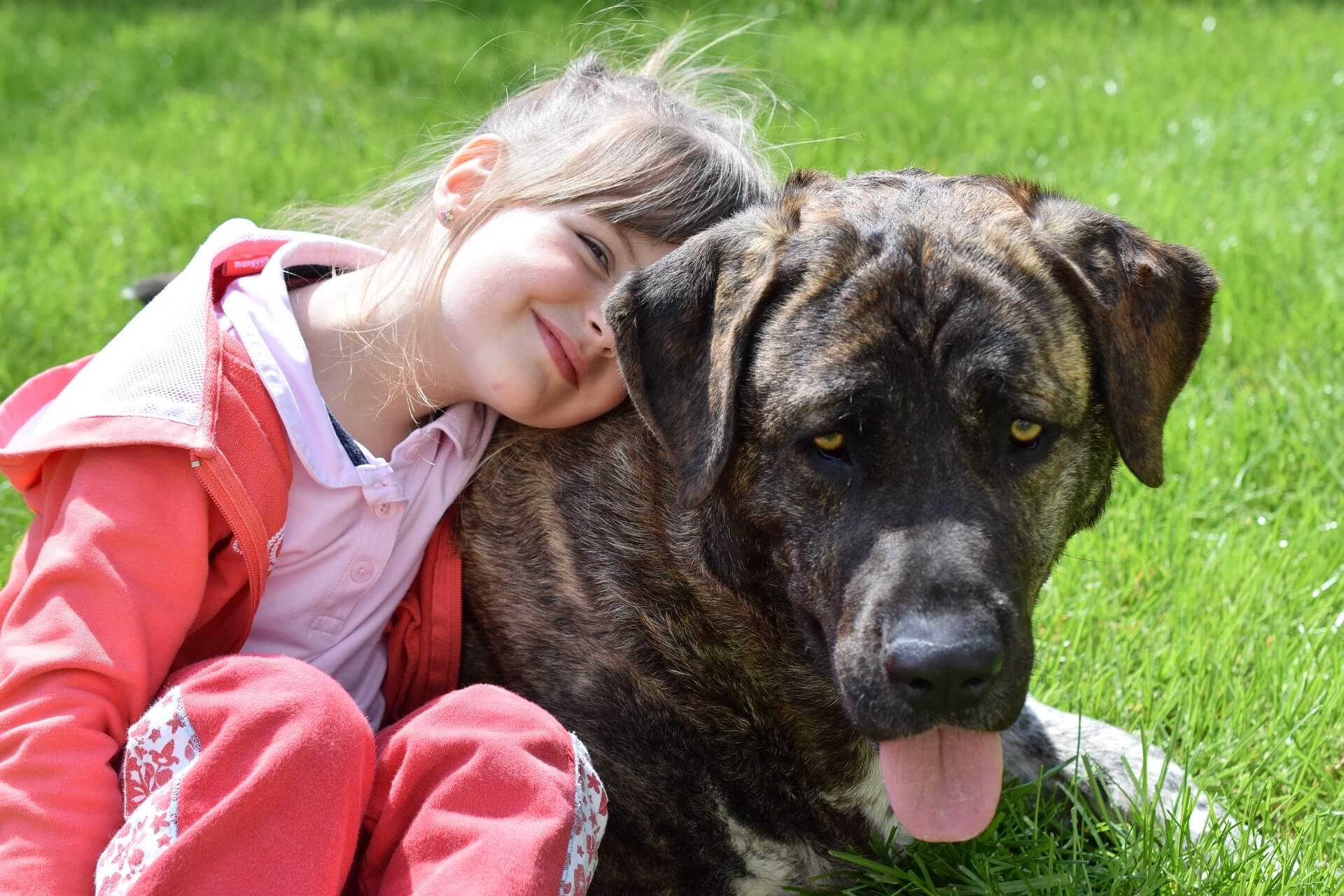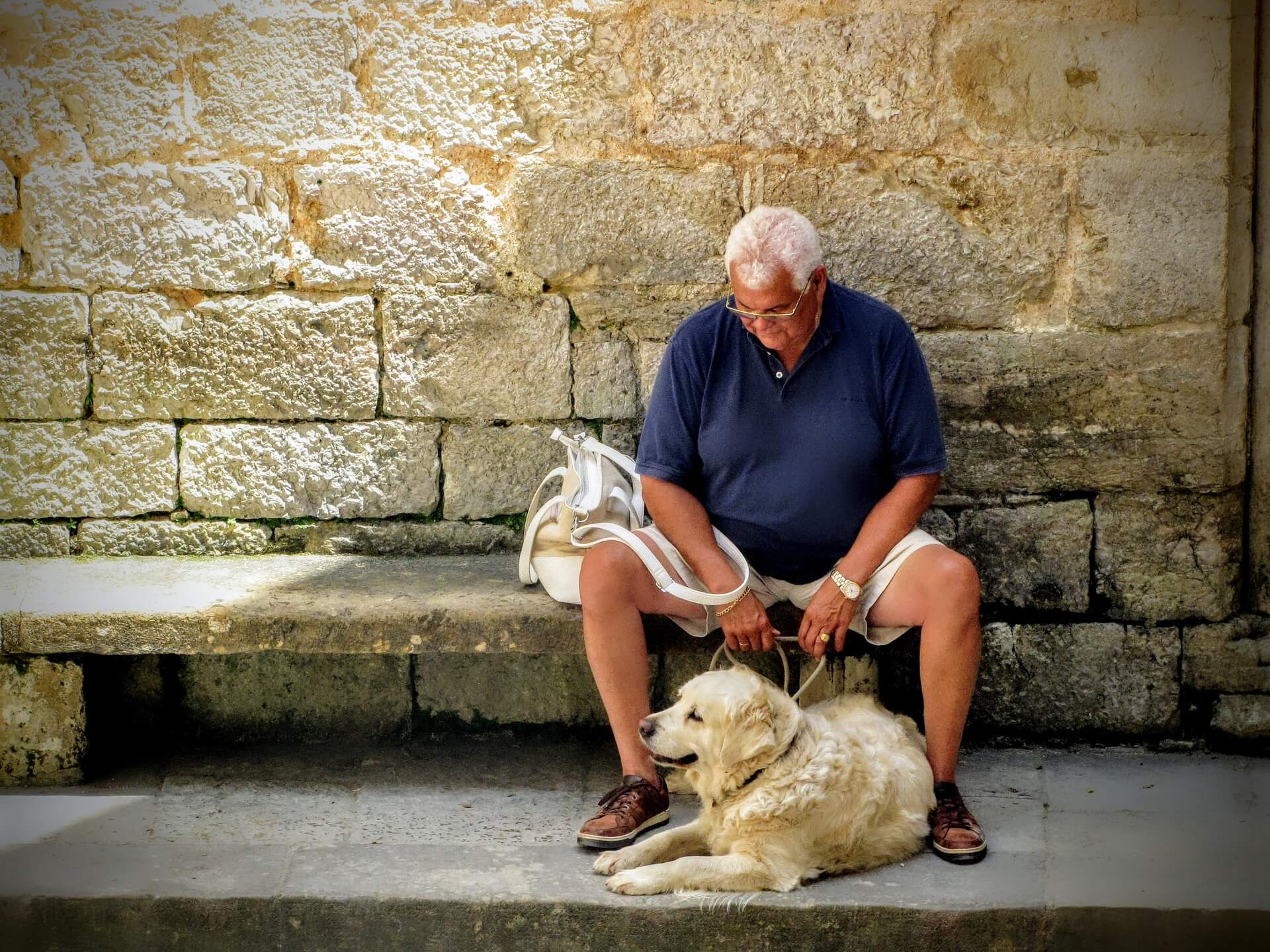2020-09-22

You may have heard about how therapy dogs in classrooms can perform wonders — they can help relieve student stress, help kids learn to read, and even boost test scores. You may also see therapy dogs work as part of the volunteering team with their handlers in places such as schools, hospitals, and carehomes.
So, are therapy dogs the same as assistance dogs? We get questions about whether a therapy dog counts as an assistance dog all the time. In this article, let’s explore the traits and requirements of a therapy dog and find out the answer.
In this article
1. What Exactly is A Therapy Dog?
2. What conditions could be assisted by a Therapy Dog?
3. Why Therapy Dogs should be trained first?
4. How to get a Therapy Dog in the UK
Step 1 Choose a therapy dog candidate
Step 3 Therapy Dog Registration
What Exactly is A Therapy Dog?
Therapy dogs, which are called "comfort dogs” sometimes, support a person's mental health by providing attention and comfort. Their sweet unconditional love may have a therapeutic benefit to those who face health challenges. Unlike assistance dogs, however, anyone can get help from a therapy dog.
Assistance dogs are specially trained to perform specific tasks to help an individual who has a disability. Assistance dogs have access privileges in public places such as on planes, restaurants, supermarkets, etc, while therapy dogs do not have the same public access as assistance dogs.
The question at the beginning of the article should unveil itself now: Therapy dogs are not assistance dogs.
What conditions could be assisted by a Therapy Dog?
Some mental health challenges and psychiatric disorders are known to respond well to therapy dogs, such as
• Depression
• Bipolar disorder
• Autism
• ADHD
• Post-traumatic stress disorder (PTSD)
• Alzheimer's disease
• Emotional challenges result from physical health problems

Why Therapy Dogs should be trained first?
For the safety of the dog and the people they visit, all therapy animals must be very calm, friendly, sociable, and must be trained to respond to commands regardless of any distractions around.
They are trained to be friendly, patient, gentle, and at ease in all situations:
- be willing to handled or cuddled by strangers
- have no sensitivity to rough stroking or petting
- reach excellent on-leash obedience levels
- be tolerant of unusual smells and sites, such as wheelchairs and medical devices, as therapy dog and handler teams usually visit health facilities
- have no fear of unsteady movement in humans
- interact with other animals in a positive way
- have no food or toy aggression
- no jump on or even paw at people

How to get a Therapy Dog in the UK
If you would like to own a therapy dog, the process is straightforward, but it does take some time and effort.
Step 1: Choose a therapy dog candidate
When you pick a therapy dog candidate, you should watch your dog closely and objectively at first to determine its true temperament. Any breed of dog can be used for therapeutic purposes, so long as it fits these requirements:
- Be healthy and over one-year of age
- Stay calm in high distracting situations
- Enjoy human contact
- Present a stable temperament
The therapy dog candidate should also be well-trained in basic obedience, and easily adaptable to novel noises, places, smells, and equipment for different purposes.
Many people prefer to choose their domestic dogs as therapy dogs so that they can be trained and then accompany their family members or friends (mostly the elderly or patients).
Step 2: Therapy Dog Training
You can choose to train a therapy dog on your own or with professional assistance. Training a therapy dog is no easy task, and often requires a lot of work on behalf of both the dog and the handler. Here’s a good place to start: How to Train Your Puppy to Become a Therapy Dog
You can contact your local hospital, special needs education organizations, or nursing home to see if they have their own animal therapy programs. Different organizations have varying criteria. Double-check the requirements before you enroll in a particular course.
Step 3: Therapy Dog Registration
Before having your dog as a therapy dog on a voluntary basis, it is recommended to first assess you and your dog work as a team. Here is a checklist for your reference:
No 1: The dog will accept friendly strangers and allow people to approach and speak to the handler in a natural, everyday situation.
No 2: The dog will sit and stay politely for petting from people other than the handler.
No 3: The dog will walk on a loose lead.
No 4: The dog will walk through a small crowd.
No 5: The dog must respond well to verbal commands like ‘sit’, ‘stay’, ‘come’, and ‘heel’.
No 6: The dog will come when called by the handler from about 10 feet away on a leash.
No 7: The dog will socialize with other dogs and display no fear or aggression.
No 8: The dog will stay calm in high distracting situations.
Once you decide to provide comfort and support to people with your dog partner, we would like to suggest that you register your Therapy Dog with supportdogcertification.org as a certified Therapy Dog before you contact the places that you will go with your dog partner to support.